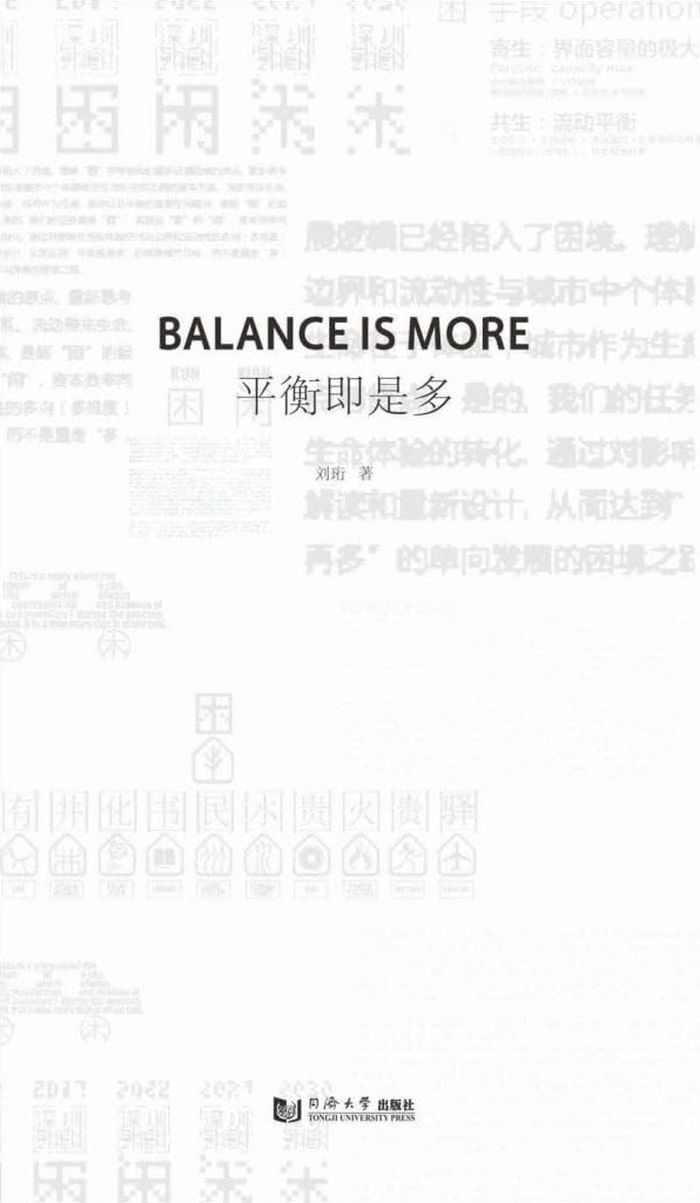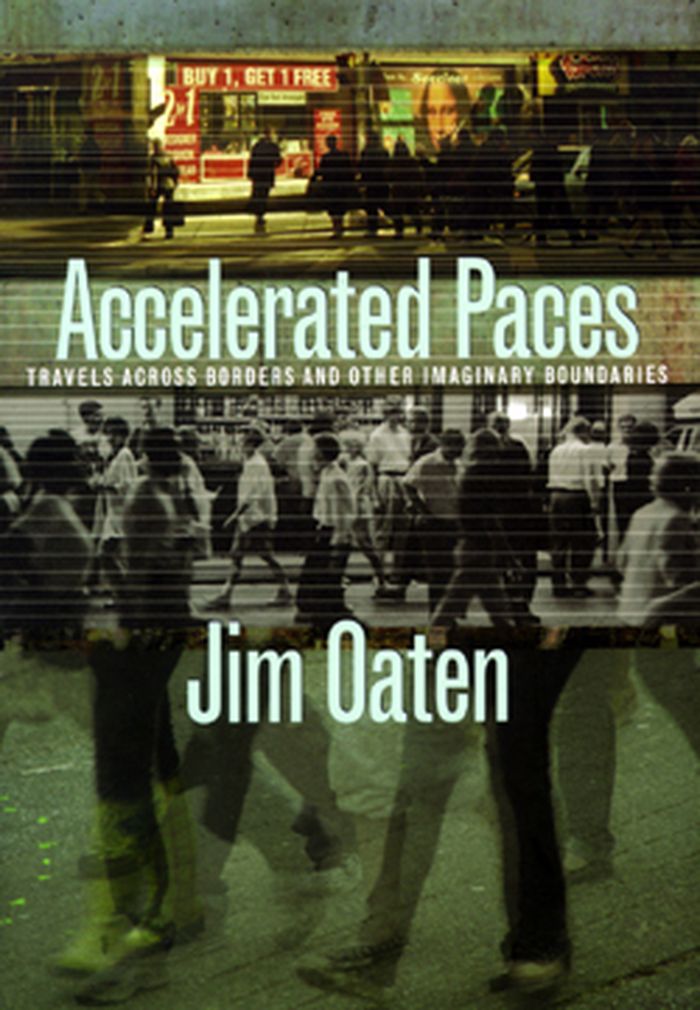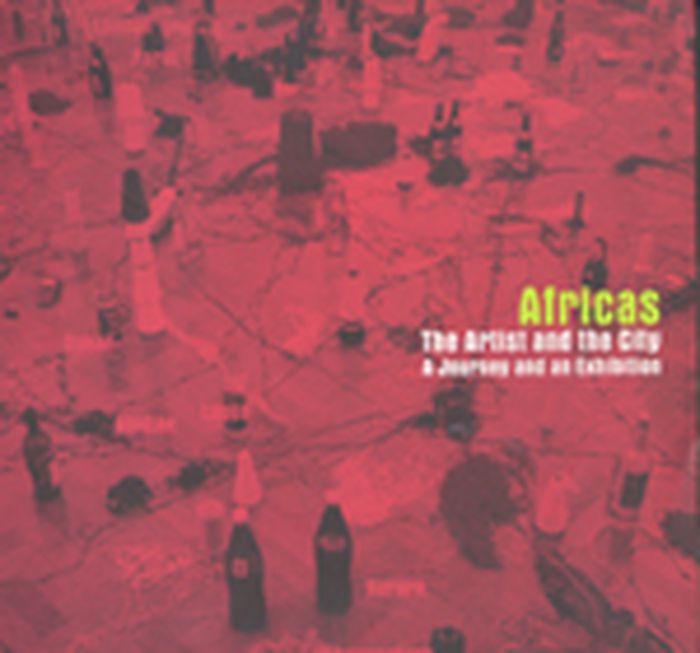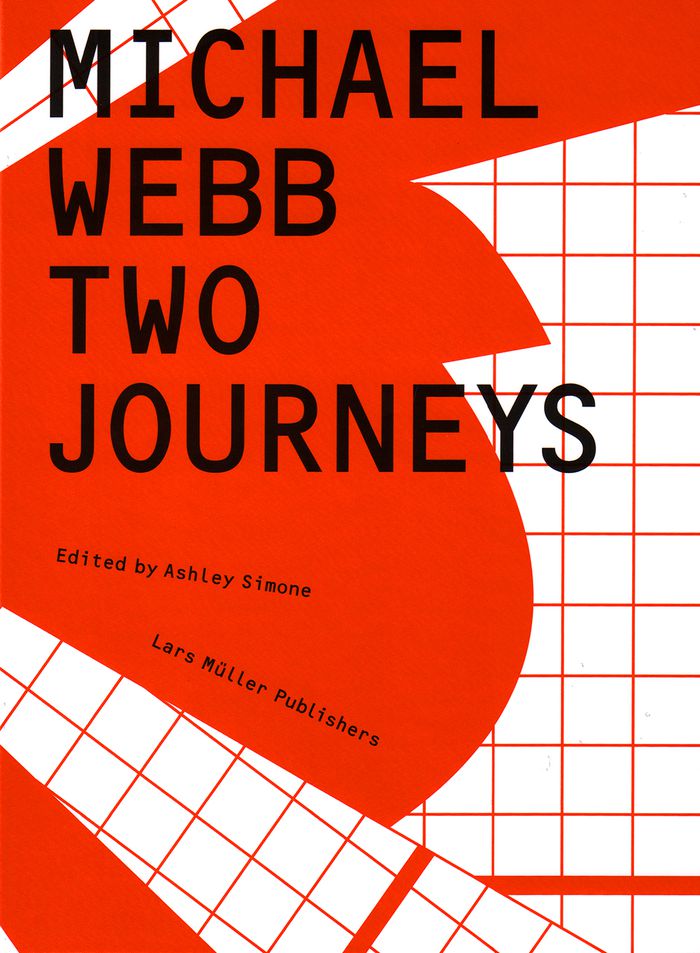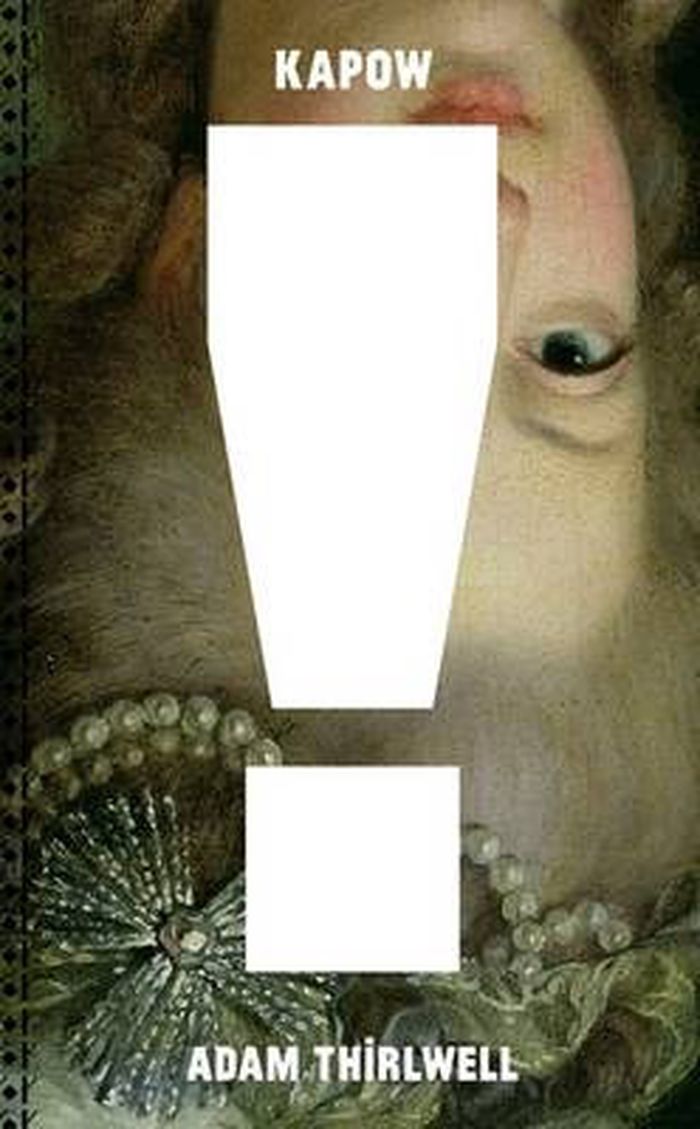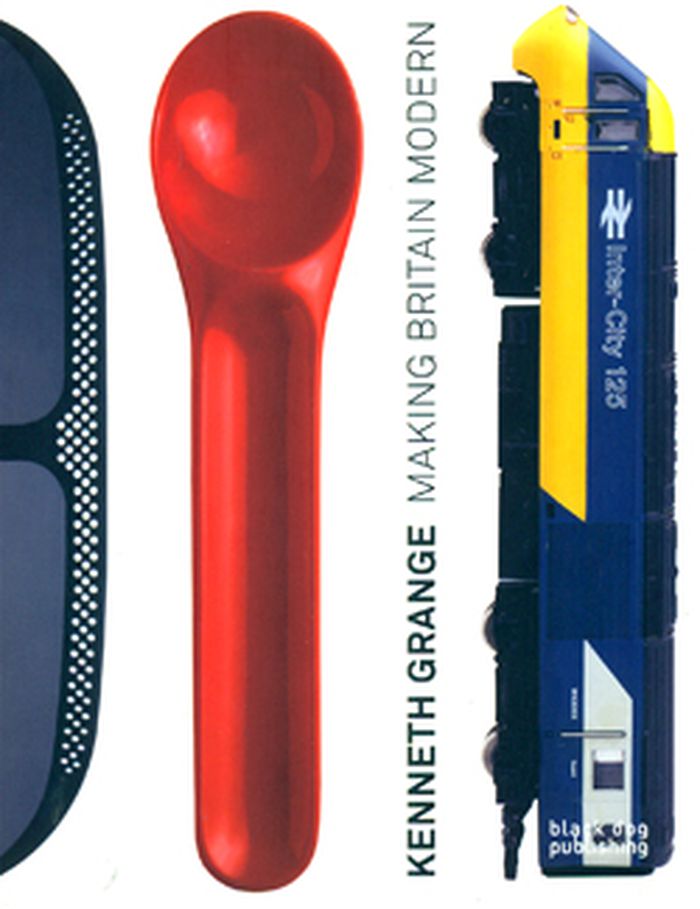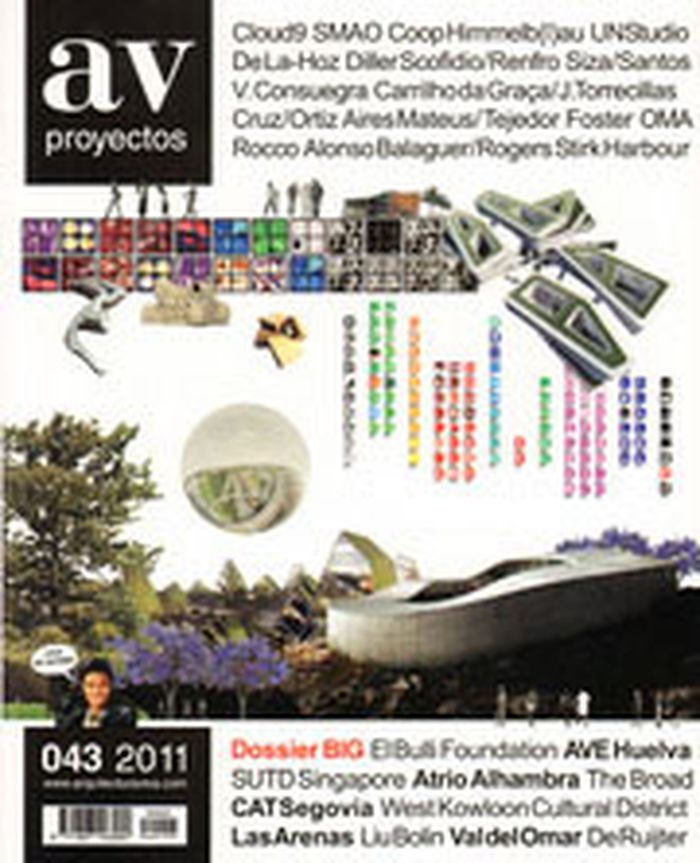$89.00
(disponible en magasin)
Résumé:
When a city is pursuing high-speed development and putting massive infrastructure into construction and operation to enable rapid economic growth and efficient urban operation, it will see, quite possibly, increasingly scarce land and resources. And much of its space for people and life lost to economic development, and worse still, the degradation of the environment and(...)
Shenzhen 2030: Balance is More
Actions:
Prix:
$89.00
(disponible en magasin)
Résumé:
When a city is pursuing high-speed development and putting massive infrastructure into construction and operation to enable rapid economic growth and efficient urban operation, it will see, quite possibly, increasingly scarce land and resources. And much of its space for people and life lost to economic development, and worse still, the degradation of the environment and the loss of nature... This disequilibrium has set us thinking: what is exactly the purpose of development? Or is it a choice that's simply not worth making? This book includes the research and design project "Shenzhen 2030: Balance is More" by Doreen Heng Liu with NODE Architecture & Urbanism at an invitation to Audi Urban Future Award 2012, as well as interviews and articles by experts and scholars in the field of architecture and urbanism.
Architecture contemporaine
$18.00
(disponible sur commande)
Résumé:
Set somewhere between here and the heat-death of the universe, Jim Oaten’s debut collection serves up random samples of literal and literary truth scooped up at top speed. Whether peeking out from the backseat of Mom and Dad’s car or surveying the grimy wings of mental wards, Accelerated Paces hurdles that uneasy terrain between creative fact and honest fiction. These(...)
Accelerated paces: travels across borders and other imaginary boundaries
Actions:
Prix:
$18.00
(disponible sur commande)
Résumé:
Set somewhere between here and the heat-death of the universe, Jim Oaten’s debut collection serves up random samples of literal and literary truth scooped up at top speed. Whether peeking out from the backseat of Mom and Dad’s car or surveying the grimy wings of mental wards, Accelerated Paces hurdles that uneasy terrain between creative fact and honest fiction. These short stories and pieces ignore borders as they jaunt thorough external trips and internal voyages. This is both creative non-fiction and creative fiction, which follows the idea of crossing boundaries and blurring borders. Think part of this collection will be an explicit demonstration of how the two genres interplay, of how a non-fiction event can inspire a fictional piece, and, interestingly enough, the reverse as well.
Théorie de l’architecture
livres
$42.00
(disponible en magasin)
Résumé:
The complex legacy of this most notable period is discussed from a different perspective by each contributor. Peter S. Reed details the rise of modern architecture during the war—housing designs that used the latest ideas in prefabricated construction methods, lightweight materials, innovative technologies, and a corporate and institutional aesthetic that helped(...)
World War II and the American dream
Actions:
Prix:
$42.00
(disponible en magasin)
Résumé:
The complex legacy of this most notable period is discussed from a different perspective by each contributor. Peter S. Reed details the rise of modern architecture during the war—housing designs that used the latest ideas in prefabricated construction methods, lightweight materials, innovative technologies, and a corporate and institutional aesthetic that helped popularize modernism as the appropriate image of American industrial might and corporate success. Robert Friedel documents the development of new materials, especially plastics, and discusses techniques for employing traditional materials in novel ways. Margaret Crawford explores the struggle of women and blacks for public housing. Finally, Michael Sorkin, architect and writer, explores the migration of certain values and aesthetics from the necessities of war to the choices of peace. Among these are images of speed, camouflage, ruin, totalization, and flight.
livres
avril 1995
Théorie de l’architecture
A-Frame: New concept
$41.95
(disponible en magasin)
Résumé:
A-Frame constructions emerged in the mid-20th century and have been forgotten for decades. In recent years we are seeing how the spirit of A-Frame style houses is gradually being revived by avant-garde architects who have adapted this approach to more modern times. It is not uncommon nowadays to find examples of modern houses with A-Frame architecture as a hallmark in(...)
A-Frame: New concept
Actions:
Prix:
$41.95
(disponible en magasin)
Résumé:
A-Frame constructions emerged in the mid-20th century and have been forgotten for decades. In recent years we are seeing how the spirit of A-Frame style houses is gradually being revived by avant-garde architects who have adapted this approach to more modern times. It is not uncommon nowadays to find examples of modern houses with A-Frame architecture as a hallmark in leading design magazines. This type of construction stands out for its structural simplicity, which in most cases reduces costs, and also for its great capacity for thermal and acoustic insulation, greater speed of construction, elimination of the need for columns, greater strength and structural consistency, among many other benefits. A-Frame homes have a better environmental impact due to energy savings in both construction and utility costs, not to mention a smaller carbon footprint for the environment.
Architecture résidentielle
Art book for children
$24.95
(disponible sur commande)
Résumé:
Why are none of the students in Raphael's school paying attention? Who made a doodle into a masterpiece? How do you paint speed? Can collecting things be art? What kind of sculpture is supposed to disappear? Can you trust a painting? How would you make a self-portrait of yourself? Can you paint music? Following the international success of THE ART BOOK FOR CHILDREN (BOOK(...)
Art book for children
Actions:
Prix:
$24.95
(disponible sur commande)
Résumé:
Why are none of the students in Raphael's school paying attention? Who made a doodle into a masterpiece? How do you paint speed? Can collecting things be art? What kind of sculpture is supposed to disappear? Can you trust a painting? How would you make a self-portrait of yourself? Can you paint music? Following the international success of THE ART BOOK FOR CHILDREN (BOOK ONE), this second volume will continue to expand the minds and creativity of children aged from seven to eleven. Thirty new artists and key examples of their works have been selected to encourage children to ask why the artists do what they do. Both volumes of THE ART BOOK FOR CHILDREN are fun for young readers, ideal tools for teachers and parents, and perfect introductions for all those approaching art for the first time.
Littérature jeunesse
$48.00
(disponible sur commande)
Résumé:
"Africas: The Artist and the City" contains a double affirmation. It corroborates the existence of an "other" urban and artistic reality in Africa, and it asserts that these realities do not correspond with what stereotypes would have us see as Africa's sole reality. In the words of Pep Subiros, we should talk not of Africa but of Africas. Yet until now, there has been(...)
Arch Moyen-Orient
janvier 1900, Barcelona
Africas : The artist and the city -a journey and an exhibition
Actions:
Prix:
$48.00
(disponible sur commande)
Résumé:
"Africas: The Artist and the City" contains a double affirmation. It corroborates the existence of an "other" urban and artistic reality in Africa, and it asserts that these realities do not correspond with what stereotypes would have us see as Africa's sole reality. In the words of Pep Subiros, we should talk not of Africa but of Africas. Yet until now, there has been little said about the Africas depicted here, about urban centers like Dakar, Cape Town, and Abidjan that are undergoing urbanization and growth at breakneck speed. And what of the work of artists based in these cities? "Africas: The Artist and the City" aims to illustrate a moment in which a fertile collision is taking place between tradition and modernity, between the local and the global--and to introduce the settings where this confluence is taking place.
Arch Moyen-Orient
Michael Webb: two journeys
$65.00
(disponible sur commande)
Résumé:
The artist Michael Webb, trained as an architect, operates at the intersection of art and architecture and is widely known for creatively exploring the outer limits of drawing techniques, including orthographic and perspectival projection systems. He is a founding member of Archigram, which formed at the Architectural Association in London in the early 1960s. The(...)
Architecture, monographies
juin 2018
Michael Webb: two journeys
Actions:
Prix:
$65.00
(disponible sur commande)
Résumé:
The artist Michael Webb, trained as an architect, operates at the intersection of art and architecture and is widely known for creatively exploring the outer limits of drawing techniques, including orthographic and perspectival projection systems. He is a founding member of Archigram, which formed at the Architectural Association in London in the early 1960s. The legendary avant-garde group is known for their fantastical projects that were often interpreted as critiques of contemporary architectural theory and practice. "Two Journeys" is the first comprehensive monograph on Webb’s oeuvre and assembles sixty years of the artist’s work into a continuously evolving narrative about the multifaceted relationships among the built environment, landscape, and moving vehicles. He investigates these relationships through the act of drawing using notions of time, space, and speed, which are artfully mediated by the precision of mathematics and tempered by abstraction.
Architecture, monographies
Adam Thirlwell : Kapow!
$28.95
(disponible sur commande)
Résumé:
Exploding with unfolding pages and multiple directions, Kapow! is a new book by British writer Adam Thirlwell. Set in the thick of the Arab Spring, it is guided by the high-speed monologue of an unnamed narrator — over-doped, over-caffeinated, overweight — trying to make sense of this history in real time. A clever, funny, and bitingly critical cultural commentary,(...)
Adam Thirlwell : Kapow!
Actions:
Prix:
$28.95
(disponible sur commande)
Résumé:
Exploding with unfolding pages and multiple directions, Kapow! is a new book by British writer Adam Thirlwell. Set in the thick of the Arab Spring, it is guided by the high-speed monologue of an unnamed narrator — over-doped, over-caffeinated, overweight — trying to make sense of this history in real time. A clever, funny, and bitingly critical cultural commentary, it uses spinning digressions to tell the stories of a group of interconnected characters in London and Egypt, each transformed by the idea of revolution. Kapow! asks readers to open and unfold pages, to follow text leaking in and out of paragraphs, while progressively becoming part of and lost within the narrator’s giddy digressions. A beautifully crafted object told in Thirlwell’s uniquely acrobatic voice, this is a visually immersive storytelling experience like no other. *** Designed by London-based Studio Frith
$29.95
(disponible sur commande)
Résumé:
This publication is the first to document the work of the post-war British product and industrial designer Kenneth Grange. Since 1947 Kenneth Grange has worked with a range of high-profile clients including British Rail, Wilkinson Sword, Manganese Bronze, and products as varied as the Anglepoise lamp, the black cab and high-speed inner city train. Grange is one of the(...)
Kenneth Grange : making Britain modern
Actions:
Prix:
$29.95
(disponible sur commande)
Résumé:
This publication is the first to document the work of the post-war British product and industrial designer Kenneth Grange. Since 1947 Kenneth Grange has worked with a range of high-profile clients including British Rail, Wilkinson Sword, Manganese Bronze, and products as varied as the Anglepoise lamp, the black cab and high-speed inner city train. Grange is one of the founding partners of the famous design consultancy Pentagram, where he has worked with a number of high-profile clients including Kodak and Kenwood. Published in conjunction with an exhibition at the Design Museum in London, the book celebrates the career of one great figure of modern British design; featuring previously unpublished interviews and specially commissioned photography of his work, it also includes essays by commentators on Modern British design including Deyan Sudjic and Fiona MacCarthy.
Design, monographies
$24.95
(disponible sur commande)
Résumé:
Programmatic alchemy recipes. This is the character that could sum up all the production of BIG (Bjarke Ingels Group), a young studio which has already become a reference in the shrewd use of factors that affect contemporary architecture. Starting his career in OMA and PLOT, in 2005 Ingels decided to found his own practice in Copenhagen and its production has only(...)
AV proyectos 043 : dossier BIG
Actions:
Prix:
$24.95
(disponible sur commande)
Résumé:
Programmatic alchemy recipes. This is the character that could sum up all the production of BIG (Bjarke Ingels Group), a young studio which has already become a reference in the shrewd use of factors that affect contemporary architecture. Starting his career in OMA and PLOT, in 2005 Ingels decided to found his own practice in Copenhagen and its production has only experienced increases ever since. Projects include the Greenland National Park in Nuuk, the Vilhelmsro Primary School in Asminderoed, the Danish Maritime Museum in Copenhagen, a Waste Treatment Plant in Copenhagen, Residences in Hualien, the Stockholm Sphere Master Plan, Loop City in Copenhagen. Also projects by Cloud 9 for the El Bulli Foundation in Gerona, SUMA Arquitectura with a Library and Multipurpose Center on Fuerteventura, Rafael de La-Hoz with a High-Speed Train Station in Huelva and more.
Revues
